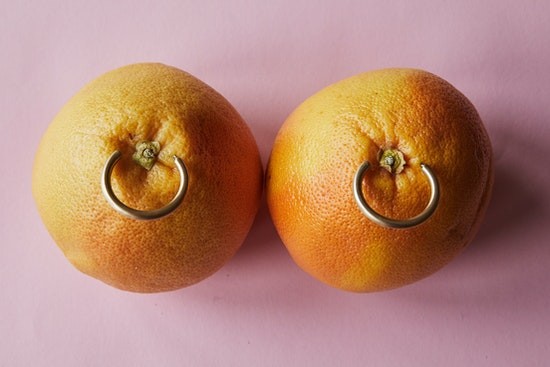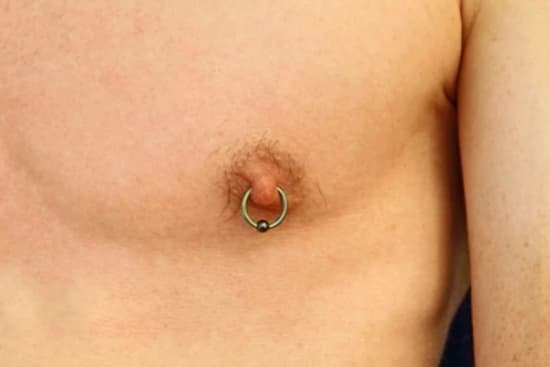An infected nipple piercing is an inflammation, swelling, and irritation on or around the punctured area where the nipple accessories are placed. Compared to other body modifications like ear and nose piercing, nipple piercing is the most painful and prone to complications. You’re basically stripping off your body’s first layer of defense when your skin is pierced. The nipples are extremely sensitive that foreign objects could easily infect the surrounding skin if the procedure was poorly conducted or the facility or tools used are unsanitary.
Fortunately, nipple piercing infection is highly treatable and preventable if proper measures are observed. In this article, I have prepared some of the facts you have to know about the condition and the infected nipple piercing symptoms you have to look out for. I also added some home treatments, prevention, and when is the best time to see your local doctor for consultation. So without any further delays, let’s begin today’s topic…

There are several telltale signs in how to know if your nipple piercing is infected. Like in any other form of body modification, the symptoms for infected nipple piercings are relatively similar. However, you must also be able to differentiate those that are caused by inflammation from irritation. And the reason why this is important is that inflammation and sore nipple piercing are a common occurrence after the procedure, and they may heal in just a few days without any major treatment. On the other hand, an irritation that persists for days that comes along with the following symptoms may be a sign of complications—
As soon as you have started experiencing any of the symptoms mentioned above, below are some of the following treatments you have to go through or when to seek immediate medical attention once the condition has worsened.
An individual has to take action once they observe the first signs of an infected nipple piercing, as stated in the previous section. By doing so, you prevent the further spreading of the bacteria, causing inflammation and swelling. It’s highly recommended that you talk to the piercer or go directly to your local physician. In events that you have observed any of the symptoms developing, the first treatments that you can do at home are the following—
Clean the Nipples and the Surrounding Skin
First and foremost, you need to clean the ooze or scabs around the swelling and inflammations. However, you need to be gentle in cleaning the infection to protect it from further injury. In addition, you need to use mild soaps or cleaning agents in order not to aggravate the infected nipple piercing. Avoid products such as ointment, hydrogen peroxide, isopropyl alcohol, and harsh soaps. Also, refrain from using OTC (over-the-counter) products that are applied topically, like antibiotic ointments or creams, because they tend to trap bacteria.
Sea Salt Soak or Warm Compress
You may easily drain nipple piercing lymph fluid if the infected area is small. And you can conduct a first aid treatment and improve your condition by applying either sea salt soak or warm compress to the area.
Diligence in Cleaning the Nipple Rings Infected
The success of home treatment may depend on the individuals’ due diligence in proper maintenance of hygiene and observance of what they should do or not do. Nipple ring infected may be painful and deliver a lot of discomfort at first, but you should recover in a few days or weeks. But you may need to seek immediate medical attention if you feel that your condition is getting worse or sees no improvement at all.

The first sign that a punctured area may be infected is irritation and discomfort. And then, it is followed by a lymph bubble on nipple piercing. Such a condition is a swelling around the nipples that sometimes discharge fluids that leaves a nipple piercing crust after it dried out. And in most cases, the ooze from the wounds emits an unpleasant odor if it’s not cleaned immediately.
It was observed that the most common cause of infection is the frequent touching or poking of the pierced site during the recovery period. It causes the tissues to inflame and introduces bacteria to the wounds since the punctured area isn’t fully healed. Another common cause is the type of clothing. Tight clothing may irritate your nipples and expose them to your body fluids like sweat, leading to the infected nipple piercing. Lastly, the injury may also be caused by how the procedure progressed and the facility’s sanitation.

If the condition didn’t improve after the initial aid at home within two days, it is the best time to consult your doctor, especially if the nipple piercing abscess symptoms worsen. At this point, the medical expert would likely prescribe antibiotics to lessen the discomfort and aid the healing process. You may also consult your piercer to help you identify some of the symptoms. They might recommend another piece if the inflammation and swelling were caused by skin sensitivity or allergic reaction to the metal accessory.
To avoid nipple piercing infections, selecting high-quality jewelry is essential. For example, the Shakalaka nipple jewelry set is a good option. Shakalaka Nipple Rings come with six pairs of high-quality, versatile piercings in various designs, including vintage, ball, and heart styles with dazzling AAA+ CZ. These are crafted from safe 316L stainless steel for comfort and durability, making them suitable for sensitive skin and perfect for gifts on special occasions.
Proper care is the key to preventing the development of infected nipple piercing. And you can observe them by the following these key points—
Like in any other piercings, the discomfort should last for only a few days or weeks, and the recovery period should take months of constant proper care. And as long as your wounds continue to heal, you are at risk of the following complications—
Keloid Nipple Piercing
A nipple piercing discharge after 2 years may still occur, and if you’re concerned about the conditions, then you may consult your doctor to provide an accurate diagnosis. However, in rare cases, the condition may worsen, and the symptoms would persist longer than they should be. Some of the possible infections at this point would include—
Again, it’s advisable that you have to consult your local physician as soon as you have any symptoms of infected nipple piercing.
Here are some of the commonly asked questions about infected nipple piercing—
There are many possible reasons why the nipple piercing may not have healed years after the procedure. Normally, the discomfort should only last for days or weeks, and the recovery period is about a few months. And if it’s taking longer than it should, then contact your piercer or local doctor. You might have an allergic reaction to a specific metal or an infection that has developed.
If something is being discharged from the pierced area at the moment, then it would be best not to remove them. The nipple rings act as the drainage, and removing them would tend to enclose the wounding and entrap the germs and harmful bacteria.
The bumps formed during the recovery process are referred to as keloids. It is actually an overgrowth scarred tissue that has the characteristics of hardness and a pimple-like bump appearance. Around the keloid area, you can expect some rashes, irritation, mild fluid discharge, and tenderness until it completely healed.
So how to wear statement necklace properly? In this article, I will provide you with the answers on its basics and the proper way of wearing them.
Read MoreHow to wear long necklaces? In today’s topic, I have prepared a list of the common necklaces and how you can properly wear them.
Read MoreSo how to wear bracelets for guys to become the center of attraction? In this article, I’ll provide you with all the essential information you need.
Read MoreHow to remove scratches from stainless steel watches? Worry no further if you have this problem at this moment because I’ll provide you some simple hacks today.
Read More